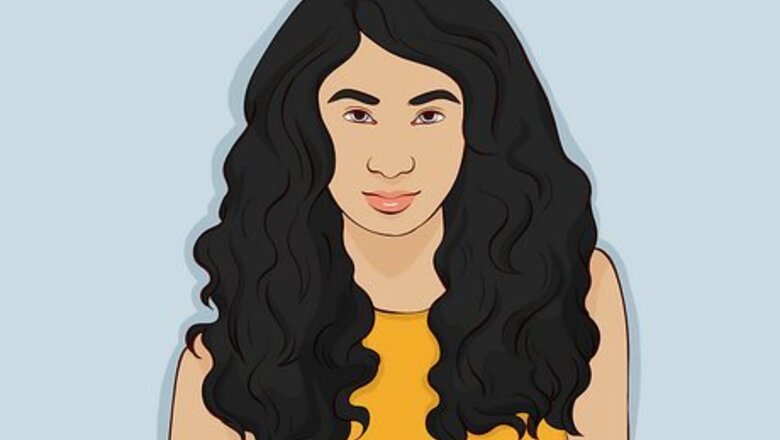
views
Getting Your Hair in Shape to Sell

Keep your hair untreated. Untreated hair, known as "virgin" hair, fetches a much higher price than hair that has been dyed, chemically straightened or chemically permed. These processes leave hair damaged, and buyers want hair that's in pristine shape. If your hair has been treated, you can still sell it as long as it isn't damaged. It just won't sell for as much money as virgin hair. If your hair has significant chemical damage from straightening, curling, or dyeing, you may not be able to sell it.
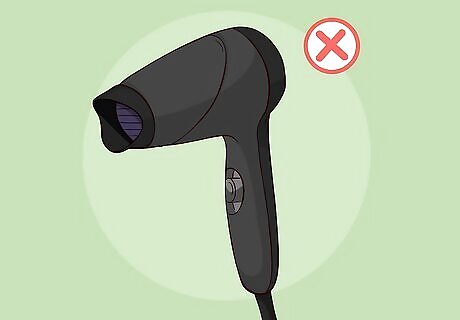
Don't use heat to style it. When you've decided you want to sell your hair, stop using hair dryers, curling irons, straightening irons or any other heating tool to style your hair. Heat damages hair and causes it to break, so it will be seen has having less value than hair that has never been damaged. Let your hair be completely natural in the months leading up to the sale. You might also want to avoid letting your hair get sun damaged. Wear a hat when you're going to spend a long time in the sun. Pool chlorine also has a drying effect on hair.
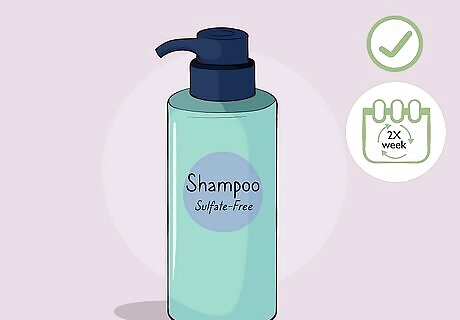
Wash your hair with sulfate-free shampoo two to three times a week. Sulfates dry out hair, leaving it more prone to getting brittle and breaking. Washing every day is also drying since you're rinsing away the natural oils that help your hair stay shiny and strong. Wash with an all-natural shampoo two to three times a week to keep your hair as healthy as possible.
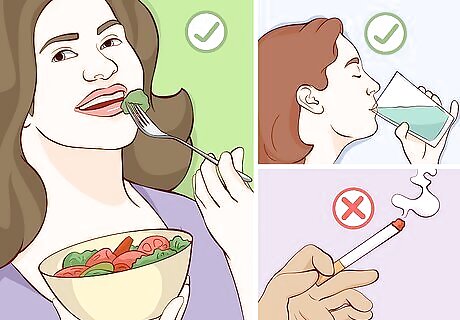
Keep your body healthy. A healthy body will produce healthy, vibrant hair. If your body isn't very healthy, your hair may look dull as a result. In the months leading up to selling your hair, do the following to keep it looking good: Eat plenty of protein, complex carbs, fruits, and vegetables, all of which help hair look strong and shiny. Good foods include salmon, eggs, whole wheat cereal, and spinach. Stay hydrated so your hair doesn't look dry and dull. Avoid smoking, since cigarette smoke can make your hair smell as well as clinging to it and making it look dull.
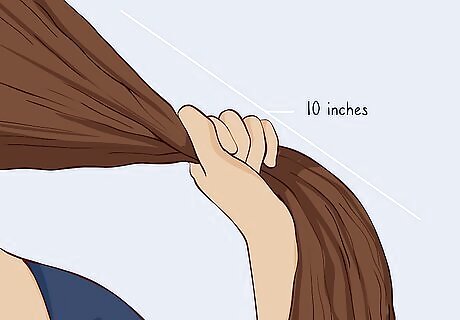
Grow it out to an even length. You want to grow it out to at least 10 inches (25.4 cm); the longer, the better, since every extra inch fetches more money. Avoid getting layers at the hair salon, since most buyers want hair that's all the same length at the bottom. Get slight trims every so often to keep split ends at bay, so that your hair can grow long and strong.
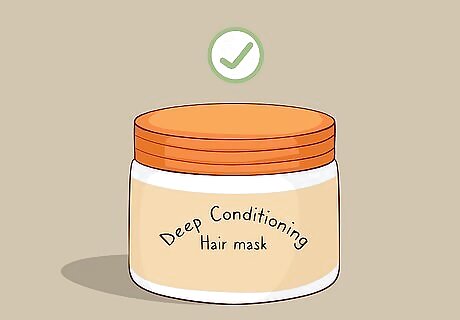
Deep condition your hair once a week. Buy a deep conditioning mask from the store, and apply it to your hair. Let it sit for at least ten minutes before rinsing it out. This will keep your hair healthy and shiny.
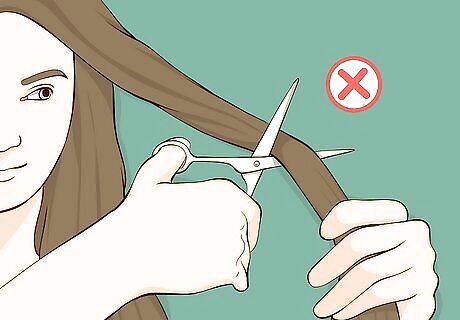
Don't cut your hair until you find someone to buy it. You get better money when the hair is fresh cut. Buyers are typically looking or hair that has its natural oils. Old cut hair tends to dry out and lose its shine.
Finding a Buyer
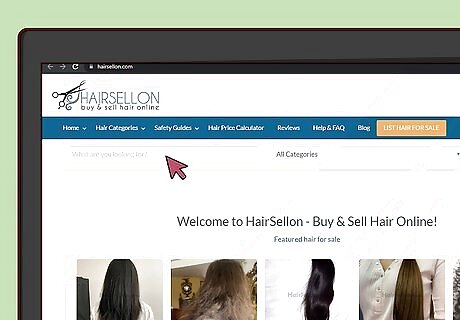
Decide if you want to sell it through a third party website. The highest prices for hair are fetched through third-party websites. You post a picture of your hair along with descriptive details, and your information appears in a list for prospective buyers to browse. If someone wants to buy your hair, they contact you through the site, you agree on a price, and you receive payment before cutting and sending your hair. Hair that's long, well-cared for and unique in color, texture or origin fetches the highest prices. Twenty-four inches of wavy red virgin hair could fetch upward of $1,000. Twelve inches of straight natural blonde hair might fetch $300 or so. Third party sites have hair price calculators to help you determine how much to charge. You'll set up an account, then follow the steps to upload a picture, the price and other details, then wait for a buyer to contact you. If you go this route, do not cut and send your hair before you receive payment. Take a picture of the hair while it's still on your head, receive payment, then cut and send your hair. This will help prevent you from getting scammed.

Consider selling directly to a wig company. If you're looking for a quicker, easier option, look into wig companies that buy lengths of hair. You'll get paid less for your hair, but it's a surer bet that you'll be able to sell it. Search online for companies and call those with reputable sites to discuss the terms. In most cases you'll get a quote for how much they'll be able to pay. You'll then cut and send your hair, and receive payment after it has been processed. Wig companies have specific requirements regarding how the hair should be cared for and packaged before it's sent. In many cases they pay by length and weight. Since they cut off several inches to remove split ends, they only pay for the usable length of hair.
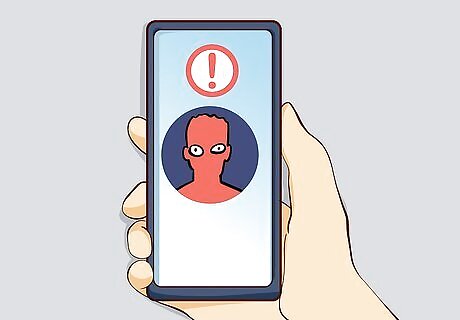
Beware of scams. Hair is a valuable commodity, and there are people ready to take advantage of women who need to sell their hair to make money. Do your research before you sell your hair. Get more than one opinion about how much it's worth before you cut it off to sell it. Most importantly, unless you have already made a deal with a reputable wig company, do not cut off your hair until you have the buyer's payment in the bank. Fraud is a problem for both buyer and seller. Buyers may want to perform the cut or use a known salon to ensure it's real human hair and not misrepresented animal hair or cut from a wig. PayPal is often a better choice than mailing money orders or Western Union because less chance of any disputes for money "claimed" to have been sent. It's also highly recommended to send it with a tracking code so that the buyer can follow the package.
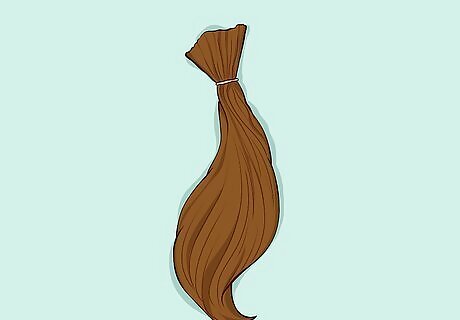
Consider donating your hair if it won't sell. Not all hair is sellable, unfortunately. Some textures and colors are less desirable to buyers hoping to make expensive wigs and extensions. However, there are companies who would happily take your hair if you've already cut it off and wish to donate it. Wigs for Kids, Maggie's Wigs 4 Kids of Michigan, Children With Hair Loss, Pantene Beautiful Length and Locks of Love are well-known organizations that uses donated hair to make wigs for people in need. There are many others, too. If you are in the UK, consider donating your hair to Little Princess Trust, or Maggie's Wigs 4 Kids Of Michigan, Locks Of Love and Children With Hair Loss, which all accept hair from all over the world. However, Pantene Beautiful Lengths currently does not accept hair from anywhere but America. Support medical patients by responsibly donating hair. "I’m so glad this article pointed me towards the Children With Hair Loss charity. Knowing I only need 8 inches of healthy, virgin hair to create a free wig for a child with cancer makes me want to give back. What a meaningful way to use my long locks." - Vanessa T. Calculate hair’s value to get fair payment. "With 18-20 inches of wavy blonde highlights, I wondered if my locks might fetch some cash. The specific details on pricing here showed me my hair is quite valuable! Armed with this knowledge, I can make sure I’m fairly compensated if I sell it." - Sarah C. Motivate gentler hair care through sales potential. "I’ve started treating my thick hair more gently after reading this, avoiding dye, heat tools, and chemicals. Seeing its selling potential made me want to keep it healthy! While I’ll likely donate my hair one day, at least now I know how to care for and price it." - Maggie L. Weigh options responsibly when considering the sale. "With long hair getting hard to manage, I considered selling it. This guide walked me through critical steps like finding buyers, preventing fraud, estimating prices, and even donating instead. Feeling informed of all my options, I can now make the best choice for my hair." - Maja K. Have a story our readers should hear? Share it with 1 billion+ annual wikiHow users. Tell us your story here.
Cutting and Packaging Your Hair
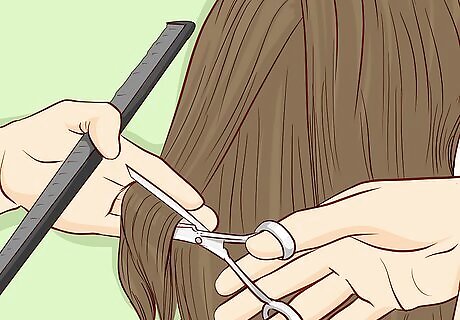
Have your hair professionally cut if possible. Tell the stylist you're donating/selling your hair and that you want it cut as evenly as possible. Give very specific instructions, and don't let the stylist add layers or texture until after the hair has been cut. Your hair needs to be completely dry, so ask your stylist to make sure it is dry, and possibly use a hair dryer. Make sure, if you use a hair dryer, you keep it on low heat as high heat from hair dryers and heat tools can damage your hair. Don't use products or heat tools on the hair before cutting.

Bundle your hair into a tight ponytail. Don't use holders with metal or rubber bands because these will break hair strand. Bundle it right at the nape of your neck, where you'll be able to cut your hair as short as you can and still keep it all the same length. The stylist should cut your hair just above the ponytail holder. Use a few ponytail holders to secure the ponytail or braid at a few points down its length, so that it does not come loose. Transfer the hair directly to a strong plastic zipper bag to protect it before sending.
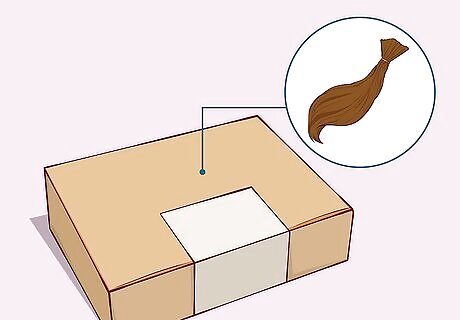
Send the hair according the agreement you made. Package it in a tightly-sealed container so it doesn't get wet or dirty, and send it off to the buyer. Make sure to send it with a tracking code so that the buyer can follow the package.















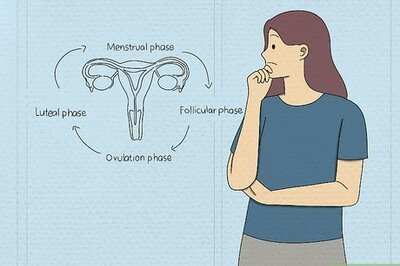


Comments
0 comment